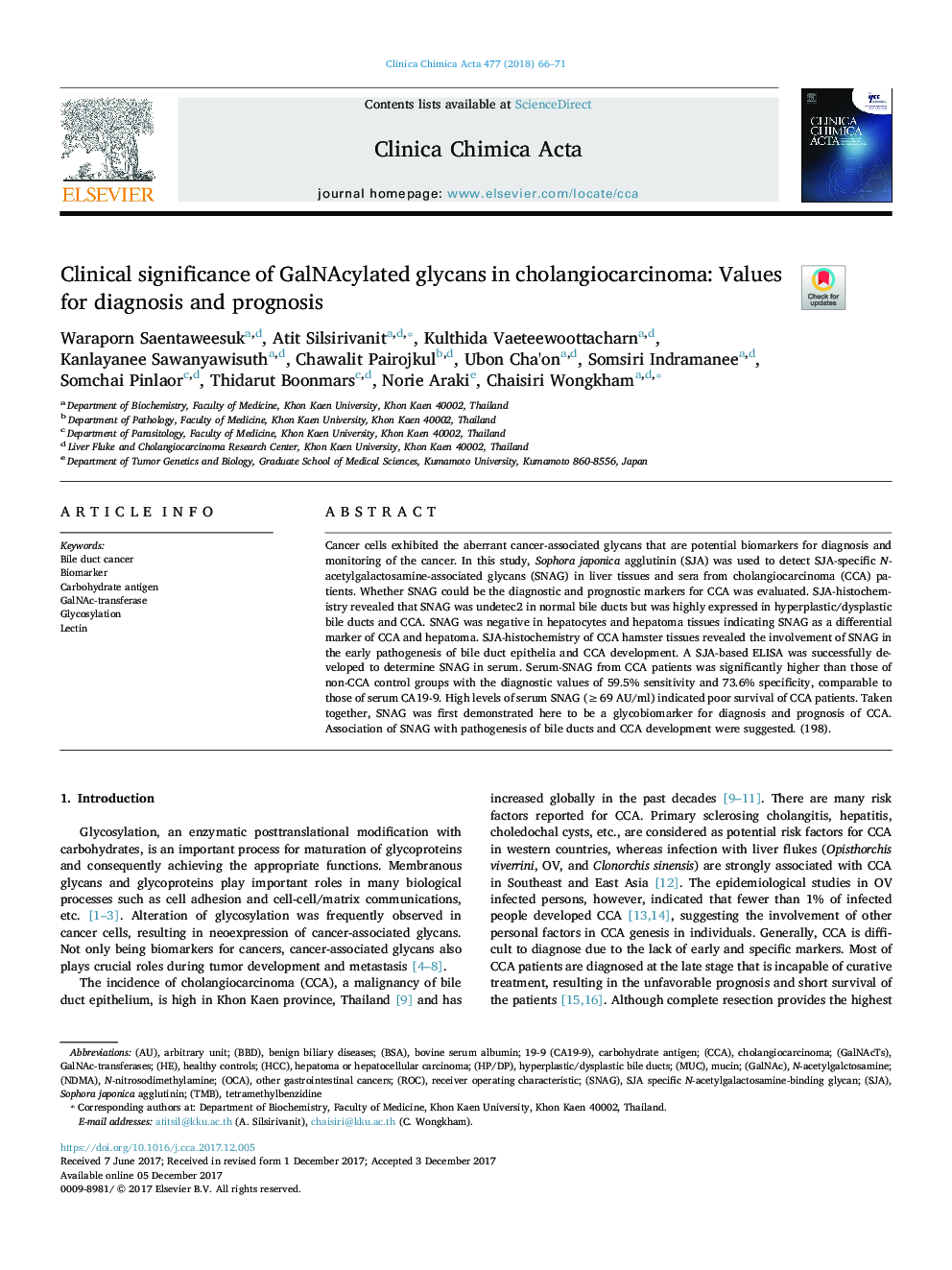| Article ID | Journal | Published Year | Pages | File Type |
|---|---|---|---|---|
| 8309743 | Clinica Chimica Acta | 2018 | 6 Pages |
Abstract
Cancer cells exhibited the aberrant cancer-associated glycans that are potential biomarkers for diagnosis and monitoring of the cancer. In this study, Sophora japonica agglutinin (SJA) was used to detect SJA-specific N-acetylgalactosamine-associated glycans (SNAG) in liver tissues and sera from cholangiocarcinoma (CCA) patients. Whether SNAG could be the diagnostic and prognostic markers for CCA was evaluated. SJA-histochemistry revealed that SNAG was undetec2 in normal bile ducts but was highly expressed in hyperplastic/dysplastic bile ducts and CCA. SNAG was negative in hepatocytes and hepatoma tissues indicating SNAG as a differential marker of CCA and hepatoma. SJA-histochemistry of CCA hamster tissues revealed the involvement of SNAG in the early pathogenesis of bile duct epithelia and CCA development. A SJA-based ELISA was successfully developed to determine SNAG in serum. Serum-SNAG from CCA patients was significantly higher than those of non-CCA control groups with the diagnostic values of 59.5% sensitivity and 73.6% specificity, comparable to those of serum CA19-9. High levels of serum SNAG (â¥Â 69 AU/ml) indicated poor survival of CCA patients. Taken together, SNAG was first demonstrated here to be a glycobiomarker for diagnosis and prognosis of CCA. Association of SNAG with pathogenesis of bile ducts and CCA development were suggested. (198).
Keywords
Related Topics
Life Sciences
Biochemistry, Genetics and Molecular Biology
Biochemistry
Authors
Waraporn Saentaweesuk, Atit Silsirivanit, Kulthida Vaeteewoottacharn, Kanlayanee Sawanyawisuth, Chawalit Pairojkul, Ubon Cha'on, Somsiri Indramanee, Somchai Pinlaor, Thidarut Boonmars, Norie Araki, Chaisiri Wongkham,
